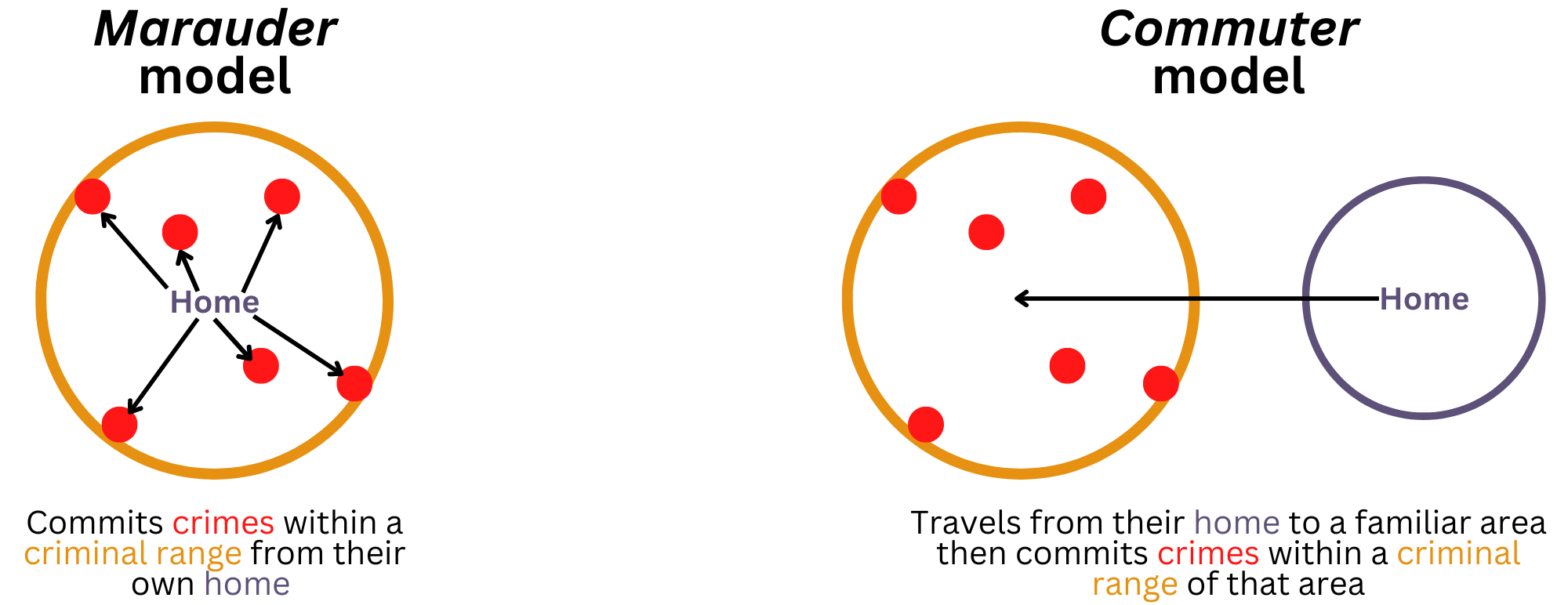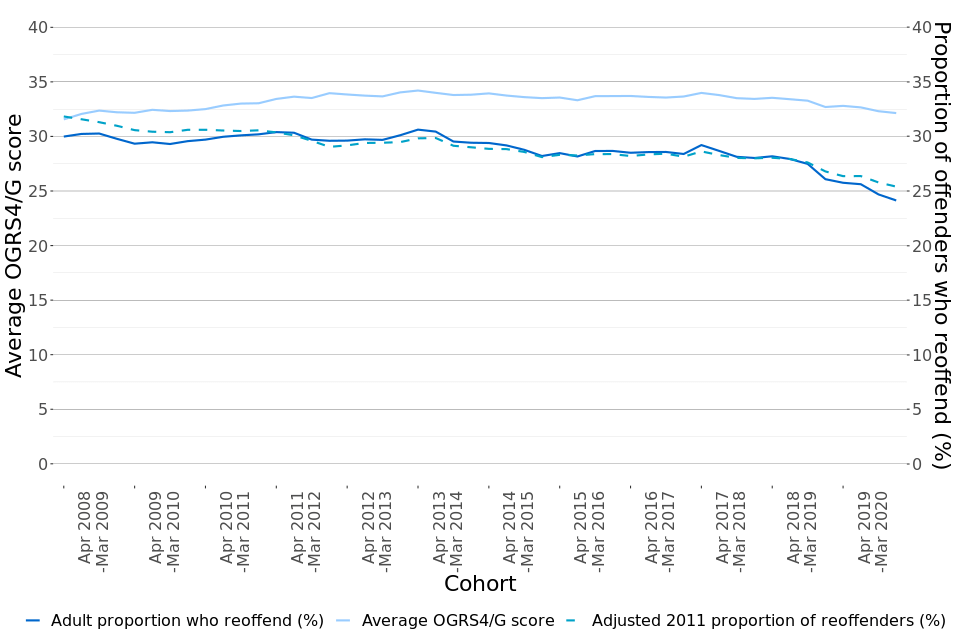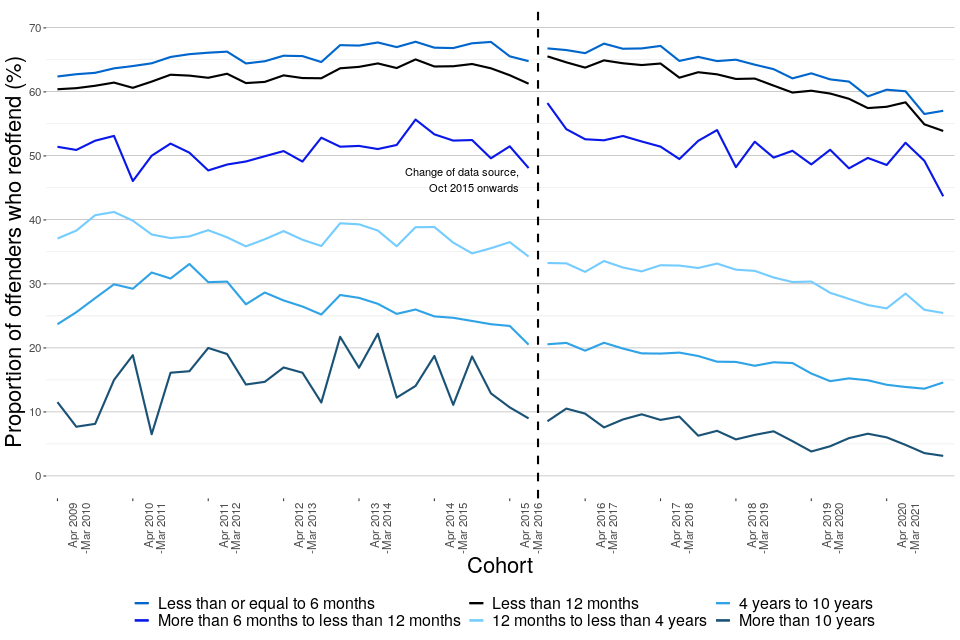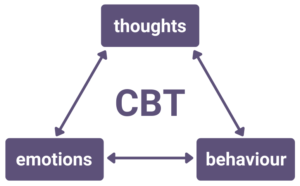Overview – Forensic Psychology
Forensic psychology is about the psychology of crime. This A Level psychology topic looks at explanations of why people commit crimes, ways of using psychology to catch criminals, and the psychology of punishing crime and prexpaeventing criminals from reoffending:
- Offender profiling (including the different features of top-down and bottom-up approaches)
- Biological explanations of criminal behaviour (including atavistic form, genes, and neural factors)
- Psychological explanations of criminal behaviour (including Eysenck’s theory of personality, cognitive explanations, differential association theory, and psychodynamic explanations)
- Dealing with criminal behaviour (including custodial sentencing, behaviour modification, anger management, and restorative justice).
Offender profiling
 Police use offender profiling to identify the characteristics of a criminal and narrow down the list of possible suspects. The syllabus mentions two approaches to this:
Police use offender profiling to identify the characteristics of a criminal and narrow down the list of possible suspects. The syllabus mentions two approaches to this:
- Top-down approach (general profiles first, then details)
- Bottom-up approach (specific details first, then general profile)
Top-down approach
The top-down approach to offender profiling starts with pre-defined criminal profiles (based on experience) and works out which of these profiles the criminal fits into. In other words, the general profiles come first and the specific details come after. This in contrast to the bottom-up approach, which works the other way round.
 Police in America tend to use the top-down approach, whereas police in Britain tend to use the bottom-up approach.
Police in America tend to use the top-down approach, whereas police in Britain tend to use the bottom-up approach.
Douglas et al (1986) describes the sequence of the FBI’s top-down approach to offender profiling:
- Assimilation
- Classification
- Reconstruction
- Profile generation
First, data is assimilated. This just means data from the scene (e.g. photographs, fingerprints, interviews with witnesses, etc.) is gathered and examined. Next, this data is classified into one of two offender profiles.
The two offender profiles used in the top-down approach are organised offender and disorganised offender:
For example, if a murder victim was stabbed but the knife is not found at the scene, that fits the organised profile. However, if the knife is left at the scene, that fits the disorganised profile. Similarly, if there are no fingerprints at the scene (e.g. because the offender brought gloves to wear), or if there is evidence that the victim was restrained, these features indicate planning and so fit the organised profile. In contrast, disorganised offenders do not plan their crimes and so would not think to bring e.g. gloves or something to restrain the victim.
After the criminal is classified into one of these two offender profiles, the profiler will attempt to reconstruct the crime. This involves identifying the timeline of the crime – including both the criminal’s and victim’s behaviour.
Once this is complete, the profiler will generate a profile of the criminal. This involves filling in specific details about the criminal – e.g. physical and psychological characteristics – beyond those described in the organised or disorganised profiles. This narrows down the range of suspects.
AO3 evaluation points: Top-down approach
Strengths of the top-down approach to offender profiling:
- Supporting evidence: Gregg McCrary and Ed Grant used the top-down approach to develop a profile of the man responsible for the murders of several prostitutes in the late 1980s. This profile ended up being a close match for the offender, Arthur Shawcross, who was eventually found guilty. This suggests the top-down approach works.
- Based on evidence: The organised and disorganised offender profiles were developed by the FBI from interview and data from 36 US murderers, including Ted Bundy and Charles Manson.
Weaknesses of the top-down approach to offender profiling:
- Conflicting evidence: Pinizzotto and Finkel (1990) compared the accuracy of profiles created by 6 US-trained profilers (using a top-down approach) against profiles created by control groups. In a task that required participants to create a profile for a sexual assault case, the profiles created by the trained profilers were no more accurate than profiles created by the control groups.
- Limited applications: The top-down approach only works for some types of crime. For example, rapists and murderers typically have a particular modus operandi (i.e. way of committing the crime) that reveal information about their character and so for these crimes the top-down approach may be useful. However, crimes such as burglary do not typically reveal any idiosyncratic details about the criminal and so bottom-up approaches (e.g. geographical profiling) are likely to be more useful.
- Overly simplistic: The binary of organised offender and disorganised offender may be too simplistic as it’s likely many offenders won’t fit neatly into either category. For example, it’s possible that a high IQ person could commit a spontaneous and unplanned murder in a fit of rage. However, high IQ is a characteristic of the organised profile, but a spontaneous crime is characteristic of the disorganised profile and so sticking too rigidly to these offender profiles could lead to inaccurate profiling.
Bottom-up approach
Whereas the top-down approach starts with possible profiles and fits the criminal to one of them, the bottom-up approach starts with the criminal’s characteristics and develops the profile based on that. In other words, the specific details of the crime come first and the general profile comes second.
 Police in Britain tend to use the bottom-up approach, whereas Police in America tend to use the top-down approach.
Police in Britain tend to use the bottom-up approach, whereas Police in America tend to use the top-down approach.
Investigative psychology
Investigative psychology is the use of scientific psychology and psychological theory to solve crimes and identify criminals.
A key concept within investigative psychology, described in Canter (1994), is interpersonal coherence. This means that the way a criminal behaves when they are committing a crime will be consistent with how they behave in everyday life. For example, a killer who commits aggressive murders is likely to be an aggressive person in general. So, if there is evidence of an aggressive murder, the profile of the suspect will include an aggressive personality.
Statistical analysis (e.g. multidimensional scaling or smallest space analysis) is used in investigative psychology to identify common themes and patterns of behaviour across several crime scenes. For example, details about the type of victim, what specific acts are committed, and how evidence is disposed of can be used to identify crimes committed by the same person. Because of interpersonal coherence, this data may also provide details about the criminal and narrow down the range of possible suspects. Statistical data can also be used to provide information about the offender’s location through geographical profiling.
Geographical profiling
 Geographical profiling is the use of statistical analysis to make inferences about the offender’s geographical location.
Geographical profiling is the use of statistical analysis to make inferences about the offender’s geographical location.
The circle hypothesis says that serial offenders carry out their crimes within a geographical circle. The circle hypothesis also predicts that the offender’s home will be within this circle.
Canter and Larkin (1993) tested the circle hypothesis by studying the locations of sexual assaults committed by 45 British serial offenders. They found that 39 of the 45 offenders (87%) lived within the circle predicted by the circle hypothesis, suggesting it is valid.
The researchers also distinguish between two geographical models for offending locations:

- Marauder: Commits crimes within a criminal range from their own home
- Commuter: Travels away from their own home to an area and then commits crimes within a criminal range of that area
AO3 evaluation points: Bottom-up approach
Strengths of the bottom-up approach to offender profiling:
- Supporting evidence:
- Investigative psychology: David Canter used his bottom-up profiling methods to develop a profile of the ‘Railway Rapist’ – responsible for several rapes and murders of women near railway stations in south-east England in the 1980s. Canter developed the profile of a man in his mid-late 20s, with a criminal record, working in a semi-skilled job, who had a poor relationship with women, knowledge of the railways, and lived near the crime scenes. This profile turned out to closely match the details of the offender, John Duffy, who was found guilty of these crimes.
- Geographical profiling: In addition to Canter and Larkin (1993) above, several studies support the validity of geographical profiling. For example, Canter and Lundrigan (2001) plotted the locations where 120 serial killers disposed of bodies and analysed this data using a statistical technique called smallest space analysis. The researchers found the killers’ homes tended to be in the centre of the plotted area where they disposed of bodies, which supports the validity of geographical profiling.
- Wider range of applications: Whereas the top-down approach only really works for crimes with a particular modus operandi, such as rape and murder, the bottom-up approach can be applied to a much wider range of crimes. For example, most burglaries are similar in method and so a top-down approach won’t reveal much about the offender’s profile. However, geographical profiling only requires the locations of the crimes, and so this bottom-up approach can be applied to basically every type of crime.
- More scientific: The bottom-up approach relies on objective and measurable data (e.g. plotting geographic locations of crimes), uses mathematical tools (e.g. statistical analysis), and is often based on psychological theory (e.g. interpersonal coherence). Because of this, Canter argues the bottom-up approach is more scientific than the top-down approach, which relies more on intuition and gut-feeling.
Weaknesses of the bottom-up approach to offender profiling:
- Conflicting evidence: Copson (1995) surveyed 184 UK police officers (UK = bottom-up approach) on the use of offender profiles created by trained profilers. Although 83% of the police surveyed said the profiles were ‘useful’, just 3% of profiles created by trained profilers resulted in identification of the offender. This suggests bottom-up profiles are not particularly useful in practice.
Biological explanations of criminal behaviour
The syllabus mentions 3 biological explanations of offending behaviour:
Atavistic form
 19th Century criminologist Cesare Lombroso proposed that criminals are biologically different from modern humans. He argued that criminals have more in common with our evolutionary ancestors than normal humans do.
19th Century criminologist Cesare Lombroso proposed that criminals are biologically different from modern humans. He argued that criminals have more in common with our evolutionary ancestors than normal humans do.
An atavism is when an ancestral genetic trait that has disappeared reappears – like a human that grows a vestigial tail. Hence, Lombroso’s theory is called atavistic form: The idea is that criminality represents the behaviours of earlier, more savage, pre-human species – like Neanderthals or homo habilis.
Lombroso argued that atavism results in criminals having distinctive facial features, such as:
- Heavy brow
- Strong jaw
- Extra fingers/toes/nipples
Further, Lombroso argued, different types of criminal have typical facial features. For example, he argued that murderers typically have curly hair and bloodshot eyes, whereas sex offenders have swollen and fleshy lips.
In support of this theory, Lombroso collected measurements of the facial features of thousands of Italian criminals. However, atavistic form is described as ‘an historical approach’ on the syllabus because few scientists now take it seriously.
AO3 evaluation points: Atavistic form explanation of criminal behaviour
Strengths of the atavistic form explanation of criminal behaviour:
- Historical influence: Even though Lombroso’s atavistic form explanation is widely dismissed by modern-day scientists, it played an important role in advancing criminology and scientific explanations of criminal behaviour. Prior to Lombroso, explanations of criminal behaviour tended to be religious (e.g. bad spirits, Satan, etc.) or moralistic (e.g. weak-mindedness). In appealing to evolutionary reasoning, Lombroso’s approach shifted the discussion towards more scientific explanations. This paved the way for more scientific explanations of criminal behaviour, such as genetic factors.
Weaknesses of the atavistic form explanation of criminal behaviour:
- Methodological concerns: A key methodological flaw in Lombroso’s approach was that he did not use a non-criminal control group to compare his measurements of criminals against. Without comparing the features of criminals against the features of non-criminals, it is impossible to say whether criminals do actually have distinctive features that differentiate them from non-criminals as Lombroso claimed.
- Alternative explanations: Even if it were true that criminals do have distinctive facial structures, there might be other causal reasons for this besides having evolutionarily primitive (atavistic) biology. For example, if someone is ‘ugly’, this could cause other people to treat them badly and this bad treatment could cause a person to engage in criminal behaviour. In this case, the link between physical appearance and criminal behaviour would be the result of environmental factors rather than biological factors (i.e. atavistic form).
- Ethical concerns: Lombroso’s atatvistic form explanation is socially sensitive because it could lead to stereotyping and discrimination based on the way a person looks.
Genetics
Several types of evidence support the existence of a genetic explanation of criminal behaviour, such as twin studies and gene association studies.
Twin and adoption studies
As always, twin studies are a good way to work out whether a psychological condition or behaviour is caused by genes:
- Christiansen (1977) analysed the concordance rates for criminal convictions among 3,586 pairs of twins. Among males, concordance rates were 35% for identical twins and 12% for non-identical twins. Among females, the concordance rates were 21% for identical twins and 8% for non-identical twins
- Lange (1931) compared concordance rates for prison sentences among 13 identical twins and 17 non-identical twins. 10 of the 13 pairs of identical twins (77%) had both spent time in prison, whereas only 2 of the 17 non-identical twins (12%) had both spent time in prison.
These studies show the concordance rates for criminal behaviour are higher among identical twins (who share 100% of their genes) than non-identical twins (who only share 50% of their genes). This supports a role for genetics in explaining criminal behaviour.
Further, some adoption studies also support a link between genetics and criminal behaviour. For example, Mednick et al (1984) looked at 14,427 adopted children and compared the likelihood that a child would grow up to engage in criminal activity if their biological parent or adoptive parents were convicted criminals. The results were as follows:
| Criminal adoptive parent |
Non-criminal adoptive parent |
|
| Criminal biological parent |
24.5% | 20% |
| Non-criminal biological parent |
14.7% | 13.5% |
These results suggest that having a biological parent who is a criminal is a better predictor of whether the child will go on to be a criminal than if the adoptive parents are criminal. This further supports a role for genetics in explaining criminal behaviour.
Candidate genes
![]() Although there is no single ‘criminal gene’, several genes have been linked with criminal behaviour.
Although there is no single ‘criminal gene’, several genes have been linked with criminal behaviour.
For example, the MAOA-L gene is linked with aggressive behaviour (see the aggression page for more details), which is in turn linked with criminal behaviour. For example, Brunner et al (1993) studied a family with a history of aggressive and criminal behaviour, and found that all the male members had the MAOA-L gene. This is an example of a gene that could (partly) explain criminal behaviour.
The MAOA-L gene affects how neurotransmitters, such as serotonin, are processed. The fact that this gene is associated with criminality thus also supports a neural explanation of criminal behaviour.
AO3 evaluation points: Genetic explanations of criminal behaviour
Strengths of genetic explanations of criminal behaviour:
- Supporting evidence: See studies above – in particular the twin and adoption studies.
Weaknesses of genetic explanations of criminal behaviour:
- Other factors: If criminal behaviour was entirely determined by genetics, the concordance rate would be 100% among identical twins. However, both Christiansen (1977) and Lange (1931) found the concordance rates for criminal behaviour among identical twins to be less than 100%, which demonstrates that other factors (e.g. different experiences and psychological factors) are needed for a complete explanation of criminal behaviour.
- Methodological issues:
- Twin studies: The usual methodological concerns with twin studies apply to Christiansen (1977) and Lange (1931). For example, it’s possible that identical twins are more likely to be treated similarly than non-identical twins due to their identical appearance. This similarity in environment may be (at least partly) responsible for the higher concordance rates for criminality among identical twins than non-identical twins.
- Adoption studies: There are also methodological issues with adoption studies like Mednick et al (1984), too: Adoptees are often raised by their biological parents for a long time before being adopted, so the correlation between having a biological parent who is a criminal and becoming a criminal could be due (at least in part) to environmental factors rather than genetics.
- Deterministic: Genetic explanations are deterministic because they say that a person’s genes are what cause criminal behaviour, not free will. However, this raises legal and moral issues: It is hard to hold someone morally responsible for criminal actions if they didn’t choose them, and so it may seem unfair to punish them.
Neural factors
Neural factors such as brain structure and neurotransmitters affect behaviour, which suggests neural explanations of criminal behaviour.
Brain structures
For example, Raine et al (1997) compared brain scans conducted on 41 convicted murderers and with brain scans conducted on 41 control participants. The researchers observed that the murderers had reduced activity in the prefrontal cortex, the superior parietal gyrus, left angular gyrus, and the corpus callosum compared to the control group.
Neurotransmitters
Neurotransmitters, such as serotonin and dopamine, may also explain criminal behaviour. For example, Brunner et al (1993) described above demonstrates a link between genes responsible for processing neurotransmitters and violent behaviour. These effects on neurotransmitters may be why these genes increase violent behaviour, suggesting a link between abnormal neurotransmitter activity and criminality.
AO3 evaluation points: Neural explanations of criminal behaviour
Strengths of neural explanations of criminal behaviour:
- Supporting evidence: See studies above.
Weaknesses of neural explanations of criminal behaviour:
- Small sample sizes: Studies linking criminal behaviour with neural factors often use small sample sizes. One reason for this is that the population of serious criminals (e.g. murderers) are hard to gain scientific access to. This effect is compounded by the high costs of brain-scanning tools, such as fMRI, which makes it even more difficult to carry out this research on large numbers of people. Because of these small sample sizes, it may be invalid to generalise the findings from these studies to the wider population.
- Ethical issues: An implication of Raine’s research is that brain scans in childhood could be used to identify potentially violent criminals of the future. This policy, if enacted, could potentially reduce crime but is socially sensitive because it could lead to discrimination against people with these brain structures.
- Deterministic: Neural explanations are biologically deterministic because they say that neural factors are what cause criminal behaviour, not free will. However, this raises legal and moral issues: If someone doesn’t choose their criminal actions, it may seem unfair to hold them morally or legally responsible for them.
Psychological explanations of criminal behaviour
The syllabus mentions the following psychological explanations of criminal behaviour:
- Eysenck’s theory of criminal personality
- Cognitive explanations (including level of moral reasoning, as well as cognitive distortions such as hostile attribution bias and minimalisation)
- Differential association theory
- Psychodynamic explanations (e.g. the superego and defence mechanisms)
Eysenck’s theory
Eysenck’s theory of personality is a general theory of personality. According to Eysenck, a person’s biology (i.e. their genes) predispose them towards certain personality traits.
These 3 key personality traits exist on a spectrum and are described in Eysenck (1947) and Eysenck (1966):
- Extrovert vs. introvert:
- An extrovert is someone who is sociable, talkative, more impulsive and risk-taking.
- In contrast, an introvert is someone who prefers to spend time alone and is less impulsive and less inclined to take risks.
- Neurotic vs. stable:
- A neurotic person is someone who is prone to strong negative emotions such as anxiety, worry, nervousness, and jealousy.
- In contrast, a stable person is (as the name suggests) more emotionally stable and calm.
- Psychotic vs. non-psychotic: This third trait was added to the theory of personality in Eysenck (1966).
- A psychotic person lacks empathy, does not feel guilt, and is aggressive and unconventional.
- In contrast, the majority of people are non-psychotic – they have a conscience and feel empathy and guilt.
These traits can be measured by completing a questionnaire called the Eysenck Personality Questionnaire.
Applied to criminal behaviour, Eysenck’s theory says that having a personality high in any of these traits makes a person more likely to commit crime:
- A highly extroverted person is more likely to commit crime because they are more likely to take risks and act impulsively. Extroverts are also thrill-seekers, so the excitement of criminal behaviour is more likely to be appealing.
- A highly neurotic person feels negative emotions more strongly, which increases the likelihood of them committing a criminal act in the heat of the moment.
- A highly psychotic person is more likely to commit a crime because they are not put off by feelings of guilt or empathy for a potential victim. High psychoticism is also associated with increased aggression, increasing the likelihood of violent criminal behaviour.
AO3 evaluation points: Eysenck's theory of criminal personality
Strengths of Eysenck’s theory of criminal personality:
- Supporting evidence: Several studies support a link between the personality traits Eysenck describes above and criminality – in particular psychoticism. For example, Furnham (1984) tested 210 subjects using Eysenck’s personality theory, a social skills test, and a test of anomie (which basically means moral values). Of these 3 tests, the results of Eysenck’s personality theory were the most accurate predictors of criminal behaviour, which supports the criminal personality theory explanation of criminal behaviour.
Weaknesses of Eysenck’s theory of criminal personality:
- Relative importance of different factors: Although there is some evidence supporting a link between Eysenck’s 3 personality traits and criminal behaviour, the links are stronger for some personality traits more than others. For example, the correlation between being highly psychotic and criminal behaviour is much stronger than the correlation between being highly neurotic and criminal behaviour.
- Methodological concerns: Much of the research linking criminality with personality type determines personality type using self-report methods such as the Eysenck Personality Questionnaire. However, self-report techniques are often unreliable as the answer the participant gives varies depending on their mood. Self-report techniques are also often invalid as participants lie (e.g. to make themselves sound better).
- Other factors: There are many people who score highly for neuroticism, extroversion, and even psychoticism who do not engage in criminal behaviour. Conversely, there are many stable, introverted, and non-psychotic people who do engage in criminal behaviour. This suggests that other factors (e.g. biology or learning approaches) are needed for a complete explanation of criminal behaviour.
Cognitive explanations
Cognitive explanations of criminal behaviour focus on the cognitions (e.g. thoughts and beliefs) of offenders. These include inadequate development of moral reasoning and cognitive distortions such as hostile attribution bias and minimalisation.
Level of moral reasoning
Several developmental psychologists have proposed that moral development – i.e. the ability to think about what is right and wrong – occurs in stages. For example, Kohlberg (1984) argued that there are 3 stages of moral development:
According to Kohlberg, the majority of people advance to the conventional morality stage of moral reasoning (and some people advance beyond that to post-conventional morality e.g. by doing philosophy).
But some people do not progress past the childlike pre-conventional morality stage. According to Kohlberg, this makes a person more likely to commit a crime.
AO3 evaluation points: Level of moral reasoning as an explanation of criminal behaviour
Strengths of level of moral reasoning as an explanation of criminal behaviour:
- Supporting evidence: Several studies suggest that criminal offenders have less developed moral reasoning than non-criminal controls. For example, Palmer and Hollin (1998) used questionnaires to compare the moral reasoning abilities of 126 male convicted offenders with 122 male non-offenders. The researchers found that the male offenders had significantly poorer moral reasoning compared to the male non-offenders, which supports the idea that underdeveloped moral reasoning contributes to criminal behaviour.
- Explanatory power: Differences in moral reasoning can explain why one person might commit a crime when another person may not. A person who commits a crime does not have the belief that what they are doing is wrong, so this means they are free to do so. In contrast, if someone has a belief that a criminal action is morally wrong, this is likely to prevent them from doing it. These differences in moral reasoning explain their different actions.
Weaknesses of level of moral reasoning as an explanation of criminal behaviour:
- Limited applications: Level of moral reasoning is able to explain some types of criminal behaviour better than others. For example, Thornton and Reid (1982) found criminals convicted of robbery were more likely to be at the pre-conventional morality stage than criminals convicted of assault.
- Methodological concerns: Kohlberg’s stages of moral development was based entirely on data from boys, with no girls included in his research. As such, the theory may suffer from gender bias (beta bias) and the results may not be valid when applied to female criminal behaviour.
- Other factors: There are examples of criminals of all stages of moral reasoning, which suggests that other factors besides pre-conventional moral reasoning (e.g. biological factors or learning approaches) are needed for a complete explanation of criminal behaviour.
Cognitive distortions
Cognitive distortions are consistent deviations from rational thought that cause people to perceive things inaccurately. Examples of cognitive distortions that may explain criminal behaviour include hostile attribution bias and minimalisation.
Hostile attribution bias
If someone has a hostile attribution bias, they will tend to misinterpret people’s actions as in some way hostile or negative.
For example, someone with a hostile attribution bias may interpret an innocent look from another person as aggressive, which may cause the person with hostile attribution bias to respond aggressively or violently.
Minimalisation
Minimalisation is a cognitive distortion where a person downplays how bad their criminal behaviour really is. This may involve justifications that reduce the offender’s sense of guilt.
For example, a thief may tell himself that his victim was rich and he’s poor so it’s fair to steal from them. Or a violent offender may tell herself that an assault wasn’t that bad.
AO3 evaluation points: Cognitive distortions as an explanation of criminal behaviour
Strengths of cognitive distortions as an explanation of criminal behaviour:
- Supporting evidence: Several studies support a link between criminal behaviour and cognitive distortions. For example:
- Hostile attribution bias: Schönenberg and Jusyte (2013) showed pictures of ’emotionally ambiguous’ faces to 55 violent offenders and 55 matched control subjects. The researchers found that the violent offenders were more likely to interpret these ambiguous stimuli as aggressive than the controls were, which supports the explanation that hostile attribution bias may explain (violent) criminal behaviour.
- Minimalisation: Pollock and Hashmall (1991) conducted a content analysis of the clinical records of 86 child molesters. They found the records often contained attempts to minimise the seriousness of their crimes Excuses including denying their actions were sexual (35%) and arguing that the actions were consensual (36%).
- Practical applications: Understanding the cognitive distortions that cause criminality could yield effective ways to reduce criminal behaviour and prevent recidivism. For example, cognitive behavioural therapy could reduce minimalisation by helping offenders understand how serious their actions are, or reduce hostile attribution bias by challenging the thought processes that lead offenders to misinterpret innocent actions as hostile.
Weaknesses of cognitive distortions as an explanation of criminal behaviour:
- Limited applications: There are many types of crime that cognitive distortions don’t explain well. For example, it’s easy to see how hostile attribution bias could lead to impulsive violence (e.g. the offender misinterprets an innocent look from someone and assaults them) but it’s hard to see how this bias could explain planned violence (e.g. a pre-meditated murder). This suggests that cognitive biases may only explain some types of crime and not others.
- Other factors: There are examples of criminals who don’t exhibit either hostile attribution bias or minimalisation, which suggests that other factors (e.g. biology or learning approaches) are needed for a complete explanation of criminal behaviour.
Differential association theory
Sutherland (1939) describes differential association theory: a learning approach that explains criminal behaviour as learned from environmental influences.
According to differential association theory, criminal behaviour is learned by associating with people who commit crimes. A person is more likely to engage in criminal activity the more of these differential associations with criminals a person has, the closer the relationships to these criminals are (e.g. parents and siblings), and the longer the duration of time spent interacting with them is. Sutherland argued these factors – frequency, duration, intensity, etc. of differential associations – can be used to mathematically predict how likely a person is to be a criminal.
Through associations with criminals, a person learns both specific methods of crime (e.g. how to source and supply drugs or how to break into houses without setting off alarms) as well as certain attitudes towards crime (e.g. that being a successful thief drug dealer is worthy of respect and that police are the bad guys). Again, the more exposure to these attitudes a person encounters, the more likely they are to engage in criminal behaviour themself.
AO3 evaluation points: Differential association theory
Strengths of differential association theory as an explanation of criminal behaviour:
- Supporting evidence: Alarid et al (2000) applied differential association theory to 1,153 newly-imprisoned criminals and found that it could accurately explain their criminal behaviour (e.g. which crimes they committed) in many cases. Because of this, the authors conclude that differential association theory is a good ‘general theory’ of crime and that it can be used to predict the likelihood that a person will engage in criminal behaviour.
- Explanatory power: Differential association theory is able to explain why rates of recidivism (reoffending after prison) are so high: People who are sent to prison will be surrounded by people who have positive attitudes towards crime and who will have knowledge of the methods involved in crime. These differential associations will further teach and encourage criminal behaviour, making a person sent to prison highly likely to reoffend.
Weaknesses of differential association theory as an explanation of criminal behaviour:
- Exceptions: There are many examples of people raised around criminals (i.e. people with favourable differential associations for crime) who do not go on to commit a crime. Similarly, there are examples of people raised in environments with very limited or no exposure to criminals who go on to commit crimes. These examples weaken support for the theory and suggest that other factors (e.g. biological factors) are also needed for a complete explanation of criminal behaviour.
- Limited applications: Although differential association may explain certain types of crime (e.g. burglary or drug dealing), there are many criminal acts that are individualistic in nature and so don’t fit with the theory. For example, serial killers are not typically raised in environments among other serial killers, so differential association theory is not able to explain such criminal behaviour.
Psychodynamic explanations
Psychodynamic explanations of criminal behaviour explain crime as the result of unconscious conflicts with different parts of the mind. Freud’s psychoanalytic theory can be applied to criminal behaviour, as can Bowlby’s maternal deprivation hypothesis.
Freud’s theory
The superego
According to Freud’s psychoanalytic theory, the superego is a person’s conscience – the part of personality responsible for morality. The superego tries to prevent the person from doing bad things but if a person does something wrong then the superego punishes the ego through guilt.
Using Freud’s theory, Blackburn (1993) describes 3 different ways the superego may develop in a way that leads to criminal behaviour:
- Under-developed superego: Normally in the phallic stage (3-5 years), a child resolves their Oedipus complex (boys) or Electra complex (girls) by identifying with their same-sex parent and internalising the values of this same-sex parent into their own superego. However, if the same-sex parent is absent, this doesn’t happen and the superego fails to develop properly. This under-developed (weak) superego means the ego is less likely to feel guilt and more likely to give in to the (potentially criminal) impulses of the id.
- Over-developed superego: If the superego is over-developed (too strong), the person may feel excessive guilt. However, rather than making them less likely to commit crime, an over-developed superego makes a person more likely to commit crime because of an unconscious desire to be caught and punished in order to alleviate the intense feelings of guilt created by the superego.
- Deviant superego: In the phallic stage (3-5 years), the child identifies with their same-sex parent and internalises their same-sex parent’s values into their own superego. However, the parent’s values are deviant (e.g. a boy who has a criminal father internalises his father’s criminal values), which means the superego does not prevent the person committing similar crimes to their parent.
Defence mechanisms
According to Freud’s psychoanalytic theory, the ego uses defence mechanisms to mediate between the id and the superego.
Englander (2007) argues that the displacement defence mechanism may explain violent behaviour. For example, a person may be angry about something that happened at work and this anger may manifest as getting into a fight in a pub later that day.
Bowlby’s maternal deprivation hypothesis
Bowlby’s maternal deprivation hypothesis (see the attachment page for more details) may also provide a psychodynamic explanation of criminal behaviour.
Bowlby (1944) conducted interviews with 44 children who had been referred to him for stealing and a control group of 44 children who had been referred to him for other reasons:
- 17 of the 44 thieves (39%) had been separated from their mothers before age 2.
- But just 2 of 44 in the control group (4.6%) had been separated from their mothers before age 2.
- Further, Bowlby diagnosed 14 of the 44 thieves (32%) as ‘affectionless psychopaths’, and 12 of these 14 affectionless psychopaths (86%) had been separated from their mothers before age 2.
These figures appear to show a strong correlation between maternal deprivation and criminal behaviour.
The psychodynamic explanation of this link is something like: Maternal deprivation causes difficulties in forming attachments in later life as well as a negative view of the world. This manifests in emotional problems such as aggression and depression, which increase the likelihood of criminal behaviour.
AO3 evaluation points: Psychodynamic explanations of criminal behaviour
Strengths of psychodynamic explanations of criminal behaviour:
- Supporting evidence: Bowlby (1944) demonstrates a correlation between maternal deprivation and criminal behaviour, which supports this particular psychodynamic explanation of criminal behaviour.
Weaknesses of psychodynamic explanations of criminal behaviour:
- Methodological concerns: Bowlby’s (1944) study took the form of interviews with the subjects. However, this method has been criticised for researcher bias as Bowlby’s own theories and pre-conceived ideas may have influenced the questions he asked and his interpretations of the answers. For example, Bowlby’s expectation that maternal deprivation could cause a child to become a psychopath could have biased him to diagnose children who were separated from their mothers as such. Because of this, Bowlby’s maternal deprivation hypothesis may not be valid.
- Conflicting evidence: According to Freud’s theory, women have weaker superegos than men (because a boy’s fear of being castrated is stronger than a girl’s fear of losing her mother’s love). If this were true, though, this would predict that women commit crimes than men because women would be more likely to have an underdeveloped superego. However, the opposite is true: Men are (on average) more likely to commit crimes than women, which suggests that psychodynamic explanations of criminal behaviour are inaccurate.
- Alternative explanations: The usual correlation does not guarantee causation argument can be made here.
- Freudian explanations of criminal behaviour: Even if there is a correlation between, for example, having an absent same-sex parent and criminality, this does not necessarily prove that an underdeveloped superego is the cause, as Blackburn (1993) suggests.
- Bowlby’s maternal deprivation hypothesis: Even if there is a correlation between maternal deprivation as an infant and criminal behaviour, this does not necessarily prove that maternal deprivation causes criminal behaviour. For example, it could be that genetics cause both the mother to abandon her child and criminal behaviour in the child. Alternatively, differential associations could explain the correlation between maternal deprivation and criminality if children raised in orphanages are more likely to be surrounded by criminal influences than children raised by their mothers.
- Unscientific: Science is about what can be observed and measured, but psychodynamic concepts are often impossible to test. For example, Freud’s theories claim that many of the psychological concepts that explain behaviour are below conscious level, which means that even the individual themself can’t observe them! The fact that these concepts can’t be measured or observed means the psychodynamic explanations of criminal behaviour based on these concepts may be unfalsifiable and unscientific.
- Other factors: There are many examples of people who experienced maternal deprivation or had an absent same-sex parent who do not go on to become criminals. This suggests that other considerations besides psychodynamic factors (e.g. biology) are needed to fully explain criminal behaviour.
Dealing with criminal behaviour
The syllabus mentions several methods of dealing with criminal behaviour and their aims. These include custodial sentencing (prison), behaviour modification, anger management, and restorative justice.
Custodial sentencing (prison)
Custodial sentencing means sentencing an offender to spend time in prison.
Aims of custodial sentencing
There are several different aims of custodial sentencing:
- Retribution: This is about justice and fairness. If an offender has committed a crime that has cause suffering to another person or society, there is a sense in which the offender should be punished and suffer themselves in order to balance things out.
- Rehabilitation: This is about helping offenders so that they are less likely to commit crimes in the future. For example, if a thief stole because he had no job and no money, rehabilitation could teach skills that help him get a job when he leaves so that he doesn’t have to steal.
- Deterrence: Prison is an negative consequence of criminal behaviour so (assuming operant conditioning) the offender is less likely to commit crimes in the future. Seeing that criminal behaviour results in prison time also deters the general public too as they will want to avoid going to prison.
- Protection: Imprisoning an offender also protects the public from them committing further crimes. For example, a serial killer will be unable to kill any more people while locked up in prison.
Psychological effects of custodial sentencing
Psychological effects of custodial sentencing include:
- Institutionalisation: If someone spends too long in prison, they may become institutionalised. This means they have come to see prison life as normal and find life outside of prison difficult. For example, a homeless person may come to prefer life in prison (e.g. the routine, regular meals, and shelter) to life on the street. Institutionalisation may increase the likelihood of recidivism because the offender may commit crimes in order to return to ‘normal’ life.
- Mental health problems: The Stanford prison study demonstrates the potential mental health issues that result from imprisonment. For example, one of the prisoners began to “act crazy, to scream, to curse, to go into a rage that seemed out of control” and had to be released after just 35 hours. As an experiment, this study could be said to lack ecological validity, but there is plenty of evidence to suggest that real prison time may also cause or exacerbate mental health problems. For example, Fazel et al (2011) found that rates of suicide in prison were roughly 3 times higher than in the general population.
- May reinforce criminal behaviour: Rather than rehabilitating offenders, custodial sentencing may actually increase the likelihood of criminal behaviour upon release. For example, differential association theory would suggest that associating with other convicted criminals in prison could teach new methods of crime and reinforce positive attitudes towards crime. The high rates of recidivism may also suggest that custodial sentencing reinforces criminal behaviour rather than deters it.
Recidivism after custodial sentencing
 Recidivism means reoffending.
Recidivism means reoffending.
According to the UK Ministry of Justice proven reoffending statistics, around 25% of adult offenders reoffend within 1 year of being convicted of a crime. This overall rate varies slightly from year-to-year:

At the level of the individual, the likelihood of reoffending varies dramatically from offender-to-offender depending on factors such as:
- The offender’s age
- The nature of the offence they were originally convicted for
- The number of previous offences the offender has committed
- Whether the offender was given a custodial sentence or a non-custodial sentence
- The length of their custodial sentence

The graph above shows that recidivism is negatively correlated with the length of custodial sentence. In other words, the longer the custodial sentence, the less likely an offender is to reoffend. Offenders given custodial sentences longer than 10 years are significantly less likely to reoffend (~10%) than offenders given custodial sentences of 6 months or less (~60%).
AO3 evaluation points: Custodial sentencing
Strengths of custodial sentencing:
- Positive outcomes upon release: Rehabilitation schemes in prison may result in the offender improving themself and changing their life for the better. For example, an offender who used crime to support themself financially may learn skills that enable them to make an honest living upon release. This results in a more positive contribution to society and gives the offender a second chance.
- Complements other approaches: Time in prison can be combined with other ways of dealing with criminal behaviour, such as behaviour modification or anger management, to improve the outcomes of custodial sentencing. For example, violent offenders can undergo anger management programs while in prison, which may accelerate their rehabilitation.
Weaknesses of custodial sentencing:
- Negative psychological effects: The many negative psychological effects of custodial sentencing (see above) can be said to go beyond retribution. For example, Fazel et al (2011) found that rates of suicide in prison were roughly 3 times higher than in the general population.
- Negative effects on criminal behaviour: The actual effects of custodial sentencing are often the complete opposite of the aims of custodial sentencing. For example, institutionalised prisoners may be more likely to commit crimes when released, which is the opposite of deterrence. Similarly, prison may reinforce criminal behaviour (e.g. differential associations may reinforce criminal values and teach better methods of crime), which is the opposite of rehabilitation. These criticisms are supported by the high rates of recidivism described above.
Behaviour modification
Behaviour modification uses the behaviourist principles of operant conditioning – positive reinforcement, negative reinforcement, and punishment – to encourage good behaviour and discourage criminal behaviour while in prison.
 An example of a behaviour modification techniques is the use of token economies. In a prison token economy, offenders earn tokens for good behaviour (e.g. following the rules, participating in rehabilitation programs, etc.) and these tokens can be used to buy things (e.g. food and cigarettes). This positively reinforces good behaviour. Token economies may also work by negatively reinforcing bad behaviour. For example, prison guards may take tokens away for bad behaviour.
An example of a behaviour modification techniques is the use of token economies. In a prison token economy, offenders earn tokens for good behaviour (e.g. following the rules, participating in rehabilitation programs, etc.) and these tokens can be used to buy things (e.g. food and cigarettes). This positively reinforces good behaviour. Token economies may also work by negatively reinforcing bad behaviour. For example, prison guards may take tokens away for bad behaviour.
Token economies were originally developed to treat mental illness (see the schizophrenia page for more details) but the principles were later adapted to the prison context.
AO3 evaluation points: Behaviour modification
Strengths of behaviour modification:
- Supporting evidence: Some studies suggest that token economies can successfully change offenders’ behaviour. For example, Milan and McKee (1976) found that token economies were more effective at improving prisoner behaviour (defined and operationalised by measures such as getting out of bed on time, keeping a clean cell, partaking in educational activities, and completing tasks) compared to other methods, such as direct orders or praise for good behaviour.
- Low costs: Token economies are easy to implement and do not require specialist psychological training (unlike e.g. anger management).
Weaknesses of behaviour modification:
- Not effective long-term: In a study of youth offenders, Kirigin et al (1982) found that although token economies improved behaviour compared to controls during the program, this effect disappeared after the program ended. This suggests that token economies are not effective tools for long-term rehabilitation.
- Ethical concerns: Some argue that token economies are unethical for various reasons. Firstly, it may be seen as unethical and dehumanising to manipulate prisoners and restrict their ability to make their own choices via token economies. Secondly, negative reinforcement and taking away privileges (e.g. phone calls with loved ones) by taking away tokens may be seen as unfair or cruel.
- Alternative approaches to dealing with criminal behaviour: Other approaches to dealing with criminal behaviour may be better at achieving the aims of sentencing than token economies. For example, anger management is likely to be a more effective for rehabilitating violent behaviour, and restorative justice is likely to be more effective at achieving retribution.
Anger management
Anger management therapies are based on the principle of the cognitive approach that cognitions (i.e. thoughts and beliefs) cause emotions, such as anger. It is often used for offenders whose crimes are the result of uncontrolled anger (e.g. assault).
 Cognitive behavioural therapy (CBT) teaches offenders to recognise the thoughts that make them angry. The specific anger management CBT therapy used for offenders has 3 stages:
Cognitive behavioural therapy (CBT) teaches offenders to recognise the thoughts that make them angry. The specific anger management CBT therapy used for offenders has 3 stages:
- Cognitive preparation: The therapist will help the offender reflect back on times when they have been angry in the past and identify potential triggers that make them angry.
- Skill acquisition: The therapist teaches the offender skills to help manage anger in anger-inducing situations. For example, the offender may be taught relaxation techniques (e.g. breathing, meditation) and/or social skills (e.g. how to communicate more clearly and avoid misunderstandings).
- Application practice: The therapist and the offender practice using the newly-learned skills in situations that may require them. For example, if the offender punched their boss in anger, the therapist and offender may re-enact that scenario and the offender will use the skills they have been taught to stay calm.
AO3 evaluation points: Anger management
Strengths of anger management:
- Supporting evidence: Several studies suggest that anger management is effective. For example, Ireland (2004) compared anger levels (as measured and operationalised by a self-report anger questionnaire and assessments by prison officers) of 50 prisoners who underwent anger management therapy with 37 prisoners in a control group who did not undergo anger management therapy. In the anger management group, mean anger ratings (as measured by the questionnaire) fell from 42.7 before therapy to 27.3 after therapy. In the control group mean anger ratings did not change significantly (39.7 to 36.6). This study suggests that anger management is an effective way to reduce anger.
Weaknesses of anger management:
- Conflicting evidence: Howells et al (2005) studied anger levels in Australian offenders before and after an anger management program. Although the offenders receiving anger management therapy demonstrated reduced anger levels after therapy compared to a control group who did not receive anger management, the difference was not statistically significant. This suggests that anger management programs do not significantly reduce anger levels and so are unlikely to prevent recidivism.
- Not effective long-term: Blackburn (1993) argues that, although anger management therapy demonstrates benefits in the short-term, there is little evidence to suggest anger management reduces recidivism in the long-term.
- Limited applications: Anger management will only be an effective way to deal with criminal behaviours caused by anger, such as assault. For criminal behaviours that are not caused by anger (e.g. burglary, drug dealing, etc.), anger management is likely to have little rehabilitative benefit.
Restorative justice
Restorative justice programs are about getting the offender to recognise the consequences of their actions and make amends to their victim(s).
Both the offender and the victim must consent to a restorative justice program. The offender must acknowledge responsibility for their crime and be willing to voluntarily take steps to repair the damage they have caused. The victim must also be willing to take part in the program, and it should not cause them further trauma.
In the case of something like vandalism, restorative justice might require the vandal to spend time fixing the property they damaged. With something like assault, it’s not like the offender can un-punch the victim, so restorative justice may involve communication between the offender and victim – for example, via in-person meeting or correspondence by letter – where the victim can express how they were affected and the offender can express their remorse and apologise.
AO3 evaluation points: Restorative justice
Strengths of restorative justice:
- Supporting evidence: A meta-analysis by Latimer et al (2005) found restorative justice programs resulted in greater victim satisfaction, greater offender satisfaction, and lower rates of recidivism compared to traditional criminal justice responses such as custodial sentencing and probation.
- Lower costs: Restorative justice is typically much less expensive than alternative methods of dealing with criminal behaviour, such as custodial sentencing or anger management.
Weaknesses of restorative justice:
- Methodological concerns: Restorative justice programs are voluntary, so there will always be a self-selection bias for participants who are motivated to change their ways (as Latimer et al (2005) acknowledge). In other words, the kinds of offenders who volunteer for restorative justice programs may be less likely to reoffend anyway. This makes it difficult to say whether restorative justice programs actually cause lower rates of recidivism, or whether they are just correlated.
- Limited applications: The voluntary nature of restorative justice programs also means their applications are limited. For example, restorative justice can’t work if either the offender or the victim doesn’t consent to take part. Similarly, if the offender doesn’t take responsibility for their actions, restorative justice isn’t an option. This limits the potential applications of restorative justice.
- Soft option: There is a common perception that restorative justice is a soft option in that it doesn’t sufficiently punish offenders for their crimes. As such, there is often greater support for harsher approaches to dealing with crime, such as custodial sentencing.
<<<Schizophrenia
or:
<<<Eating behaviour
or: